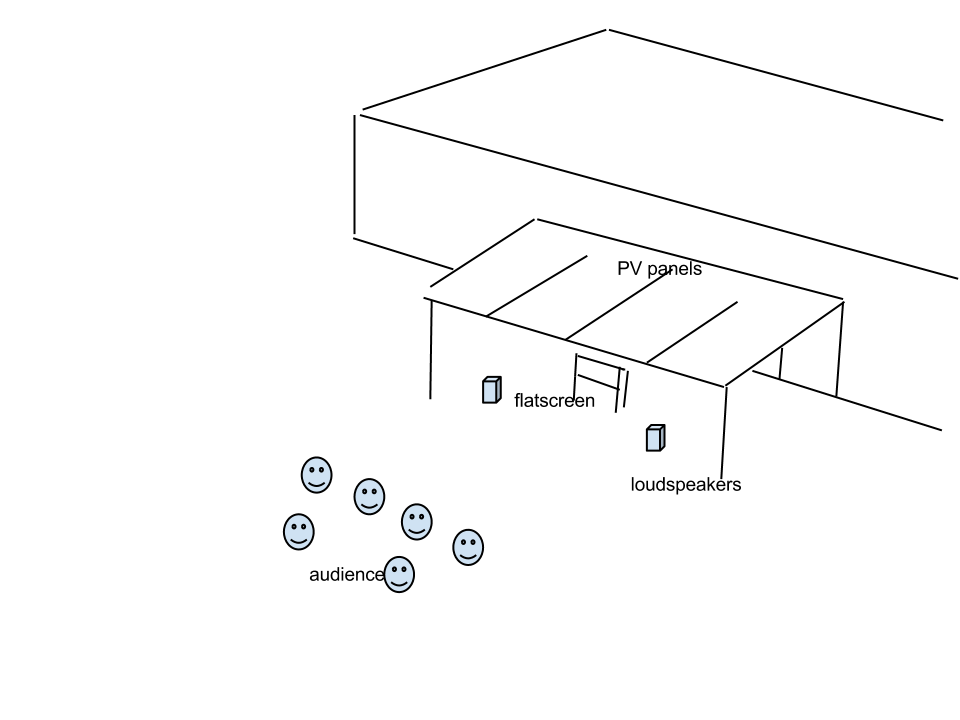Difference between revisions of "User:Wouter.drucker/Television"
(→Joint screening) |
|||
| Line 10: | Line 10: | ||
*during the day, when energy is abundant | *during the day, when energy is abundant | ||
*outside (or only the audience outside), so less indoor space needed | *outside (or only the audience outside), so less indoor space needed | ||
| + | |||
| + | [[File:Screencoveredbypvpanels.png]] | ||
== Secluded screening == | == Secluded screening == | ||
Revision as of 02:26, 27 February 2013
Contents |
Joint screening
50-200 people can watch using a single beamer. This reduces cost of energy, purchase and replacement. It requires a dedicated space. Instead of a beamer a large flatscreen can be used which doesn't require the room to be darkened. If the climate allows for it, viewing could take place outside, a beamer would be used after dark, a flatscreen during the day. This would reduce cost of dedicated spaces. Some special structure should be built to protect the equipment.
Watching films and television together is a good way to form bonds.
Reasons for large flat screen television instead of beamer
A flat screen doesn't need a darkened room. Therefore it can be operated
- during the day, when energy is abundant
- outside (or only the audience outside), so less indoor space needed
Secluded screening
Secluded screening is very costly.
Reasons for no television
Saves in cost. Television is well known not to be a source for happiness.
Reasons for television
Television can be important to retain a sense of connection to the outside world. Children may need the information input to optimally develop. Most people agree that they shouldn't watch television, but they do so anyway: when addicted, it is sometimes best to indulge, to overcome it. Watching television can be a way to overcome a low point, or to rest. The way to stop watching television is to get to a point where you don't want to. Using sacrifice to stop doesn't work.
